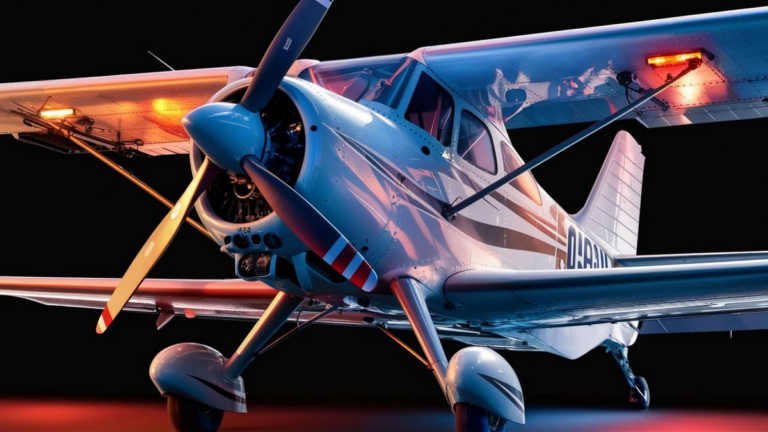Single-engine piston aircraft represent a fundamental segment of aviation, embodying simplicity, reliability, and versatility. These aircraft are characterized by their single propulsion source, typically powered by piston engines, which drive a propeller for generating thrust.
The Versatility of Single Engine Piston Aircraft
Single-engine piston aircraft serve various roles in aviation, ranging from recreational flying to flight training, aerial photography, agricultural operations, and even light cargo transport. Their versatility stems from their ability to operate from short runways, making them suitable for accessing remote locations where larger aircraft cannot land.
Recreational Flying
Many aviation enthusiasts and private pilots opt for single-engine piston aircraft for recreational flying. These aircraft offer an exhilarating experience, allowing pilots to explore the skies and enjoy the freedom of flight.
Flight Training
Single-engine piston aircraft are commonly used for flight training purposes. They provide an ideal platform for aspiring pilots to learn the fundamentals of aviation, including basic flight maneuvers, navigation, and emergency procedures.
Aerial Photography
Equipped with specialized camera mounts, single-engine piston aircraft are utilized for aerial photography and surveying missions. Their agility and stability make them suitable for capturing stunning aerial images for various applications, including mapping, environmental monitoring, and cinematography.
Agricultural Operations
In agricultural aviation, single-engine piston aircraft, often referred to as crop dusters or ag planes, play a vital role in crop dusting and pest control. These aircraft are equipped with spraying systems to apply fertilizers, pesticides, and herbicides over agricultural fields, helping to enhance crop yields and protect crops from pests and diseases.
Light Cargo Transport
For transporting small payloads to remote areas, single-engine piston aircraft serve as efficient and cost-effective platforms. They can carry essential supplies, mail, and medical equipment to communities located in rugged terrain or inaccessible by road.
Advantages of Single Engine Piston Aircraft
Single-engine piston aircraft offer several advantages that make them popular among pilots and operators:
- Cost-Effectiveness: These aircraft have lower acquisition and operating costs compared to multi-engine counterparts, making them accessible to a broader range of users.
- Efficiency: Piston engines are fuel-efficient, allowing single-engine piston aircraft to cover considerable distances while consuming relatively little fuel.
- Reliability: Piston engines are known for their reliability and ease of maintenance, reducing downtime and operational disruptions.
- Maneuverability: Single-engine piston aircraft are highly maneuverable, enabling pilots to perform precise aerial maneuvers and navigate through tight airspace.
- Accessibility: With their ability to operate from short runways and unimproved airstrips, single-engine piston aircraft can access remote locations with limited infrastructure.
The Future of Single Engine Piston Aircraft
Despite advancements in aviation technology, single-engine piston aircraft continue to play a significant role in the aviation industry. With ongoing innovations in engine efficiency, avionics, and materials, these aircraft are becoming safer, more capable, and environmentally friendly. The enduring appeal of single-engine piston aircraft lies in their simplicity, reliability, and timeless charm, ensuring their relevance in the skies for generations to come.
Skydiving Operations
Another notable application of single-engine piston aircraft is in skydiving operations. These aircraft are often modified with specialized doors and seating arrangements to accommodate skydivers. Their ability to climb quickly to altitude and maneuver precisely makes them suitable for this adrenaline-pumping activity.
Environmental Impact
Single-engine piston aircraft, with their fuel-efficient engines and relatively low emissions, have a smaller environmental footprint compared to larger, jet-powered aircraft. This aspect is increasingly important as environmental awareness grows, positioning these aircraft favorably in certain markets and operations where sustainability is a concern.
Search and Rescue
Single-engine piston aircraft are utilized in search and rescue operations due to their ability to cover vast areas quickly and access remote locations. Equipped with specialized equipment such as thermal imaging cameras and emergency beacons, these aircraft play a crucial role in locating and rescuing individuals in distress.
Frequently Asked Questions
| Question | Answer |
|---|---|
| Are single-engine piston aircraft safe? | Yes, when properly maintained and operated by trained pilots, single-engine piston aircraft are considered safe for various missions. |
| Can single-engine piston aircraft fly long distances? | While they may not have the range of larger aircraft, single-engine piston aircraft can cover considerable distances with proper planning and fuel management. |
| What is the typical seating capacity of single-engine piston aircraft? | Seating capacity varies depending on the specific model, but most single-engine piston aircraft can accommodate between two to six passengers. |
| Are single-engine piston aircraft suitable for night flying? | With appropriate equipment and pilot training, single-engine piston aircraft can be flown at night, although certain restrictions and considerations apply. |






